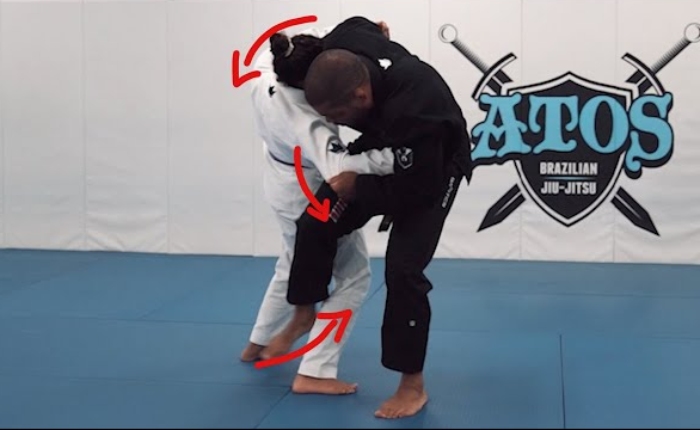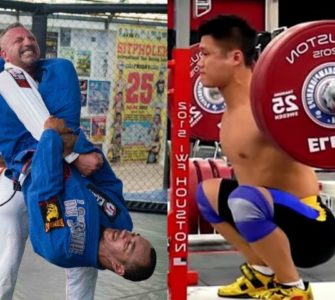Osotogari is a highly popular and powerful throw in Judo, Sambo and BJJ. It is classified as a foot technique, Ashi-Waza.
The problem is that the classic way that it is usually is NOT the way that it is set up in Jiu-Jitsu competition.
In this video, Andre Galvao, a renowned Brazilian Jiu-Jitsu practitioner and instructor from Atos Jiu-Jitsu HQ, demonstrates the effective application of the “Osoto Gari” judo technique against Jiu-Jitsu players.
Understanding the Basics
Galvao begins by emphasizing the difference in postures between Judo and Jiu-Jitsu, noting that Jiu-Jitsu’s more defensive posture can make traditional judo takedowns challenging. He explains the “Osoto Gari” (Major Outer Reaping) technique, which involves positioning side by side with the opponent and sweeping their leg.
Technique Breakdown
- Positioning: Galvao highlights the importance of positioning your opponent’s weight towards the leg that will be swept. He advises bringing the opponent’s head closer to your shoulder, ensuring a strong posture for the sweep.
- Execution Steps:
- Initial Movement: The initial step involves moving your leading leg (the leg closest to the opponent) closer, rather than stepping forward with the outside leg.
- Hooking the Leg: Galvao shows how to hook your leg behind the opponent’s knee while maintaining a strong, forward-facing core.
- Chopping Motion: As you connect your leg behind the opponent’s knee, execute a chopping motion with your leg while simultaneously moving your back leg forward.
- The Sweep: Align your leg with or slightly behind the opponent’s leg, and then execute the foot sweep, maintaining balance throughout the move.
Key Tips for Successful Execution
- Maintain a strong posture and avoid leaning too far forward.
- Ensure coordination between chopping the opponent’s knee and moving your back leg forward.
- Practice balance; avoid falling over after the takedown.
- Adapt the technique to the opponent’s posture, common in Jiu-Jitsu matches.
Practical Drills
Galvao suggests drilling the technique either for a set time (e.g., 3 minutes) or a certain number of repetitions (e.g., 20 takedowns). He stresses the importance of working on the technique’s speed and reaction time, rather than just the force.


















